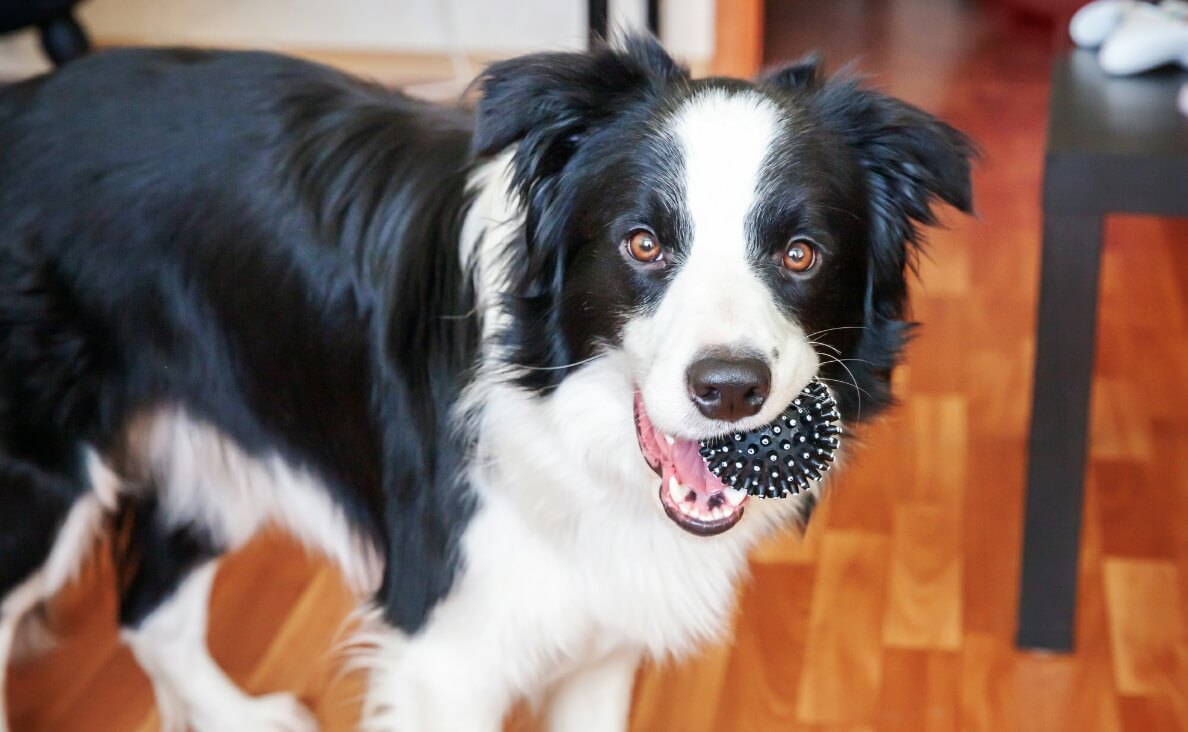
Teaching your dog to identify toys by name is not only a fun activity but also a great way to build a stronger bond with your furry companion. This skill enhances communication, mental stimulation, and playtime enjoyment, making it a valuable addition to your dog’s training repertoire.
In this blog post, we’ll explore why teaching your dog this unique trick is beneficial, how to prepare for a training session, and the step-by-step process to achieve success. By the end, you’ll have all the tools you need to help your dog excel in identifying toys by name.
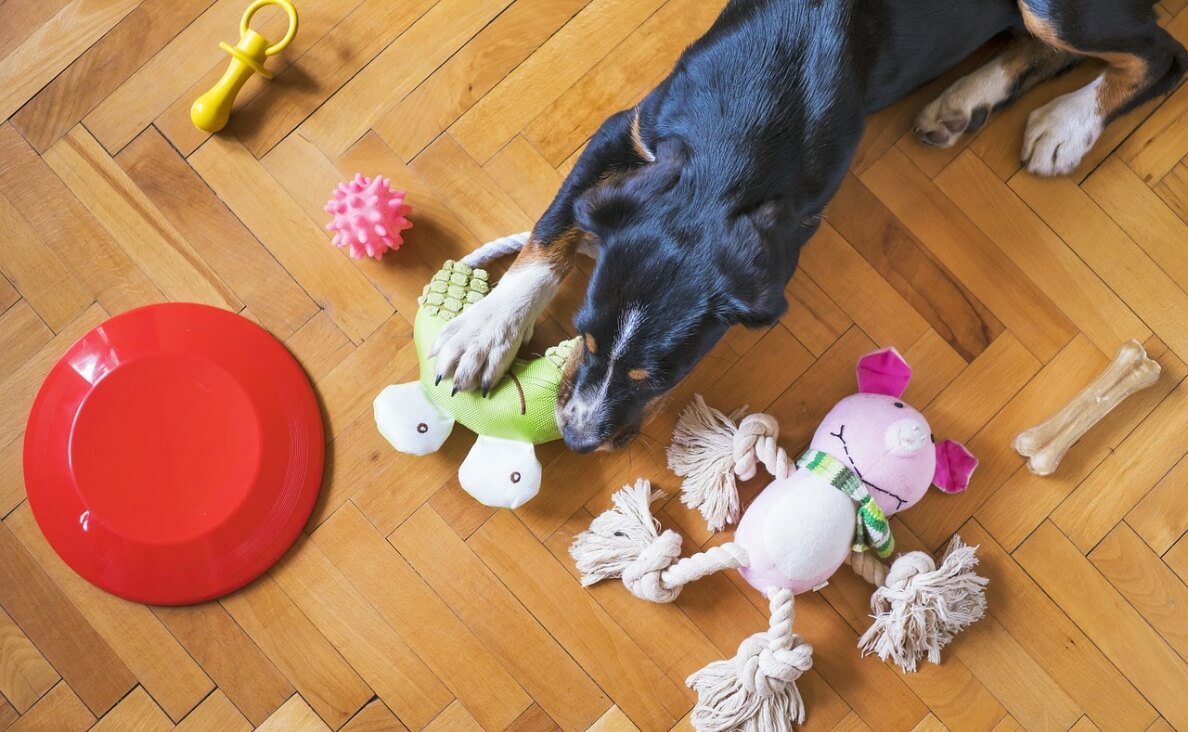
Why Teach Your Dog to Identify Toys by Name?
Teaching your dog to identify toys by name provides numerous benefits. Here are some of the most significant reasons to give this training a try:
1. Cognitive Benefit
Learning to associate toy names with specific objects challenges your dog’s brain, keeping it active and engaged. Dogs thrive when they’re mentally stimulated, and this activity provides an excellent opportunity for problem-solving.
2. Enhanced Playtime
Imagine asking your dog to fetch their favorite toy by name and watching them confidently retrieve it. Teaching your dog this skill transforms ordinary playtime into an interactive and exciting experience.
Related: Teach Your Dog to Fetch: A Step-By-Step Guide for Fun and Exercise
3. Strengthened Bond
Training sessions focused on teaching your dog to identify toys allow you to spend quality time together. This shared activity deepens your connection and reinforces positive behaviors.
Helping your dog to identify toys not only strengthens their mental sharpness but also adds an enjoyable layer to your daily interactions.
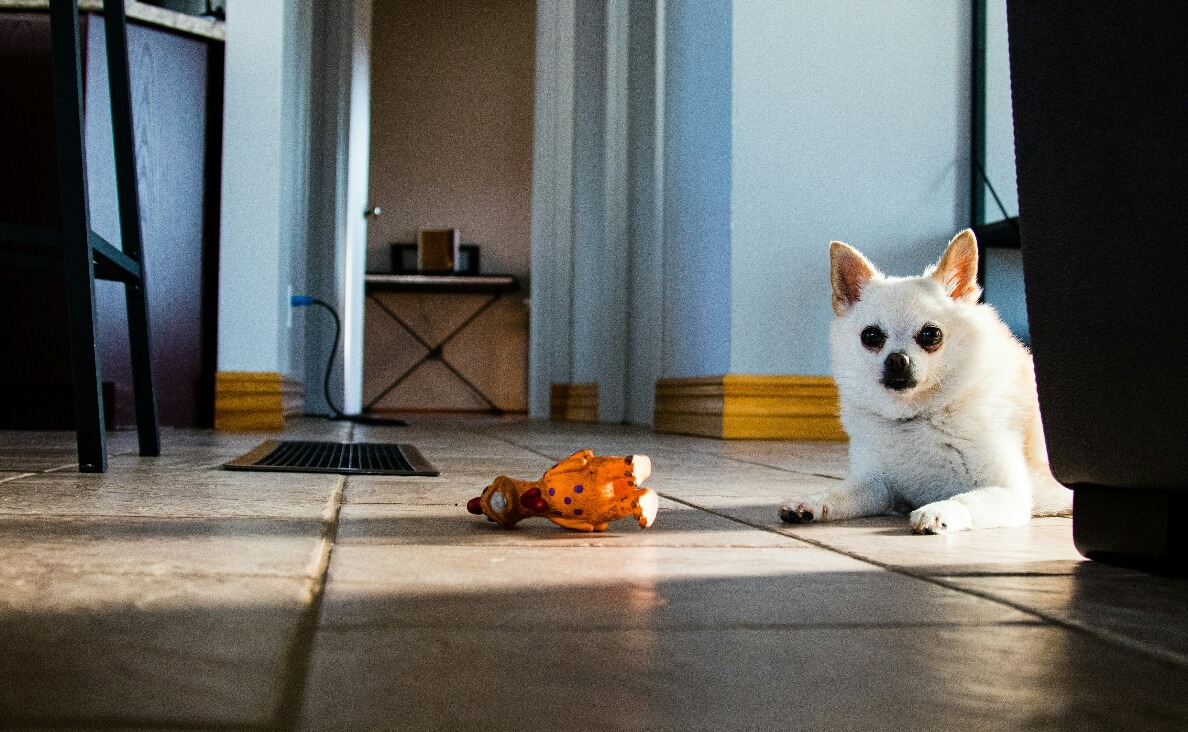
Preparing for the Training Session
Before diving into the training process, preparation is key. Follow these steps to set your dog up for success:
1. Choose a Quiet Environment
Select a distraction-free space where your dog can focus. Avoid areas with excessive noise or other pets that might disrupt their attention.
2. Gather a Few Distinct Toys
Start with two or three toys that differ in shape, texture, and color. This makes it easier for your dog to differentiate between them. For example, use a soft plush toy, a squeaky ball, and a rubber chew toy.
Related: 5 Tips for Choosing the Best Toys for Your Dog
3. Use Rewards
Prepare high-value treats or a clicker to reinforce positive behavior. Rewards help keep your dog motivated and enthusiastic during training sessions.
4. Consistency in Naming Toys
Decide on simple, unique names for each toy and stick to them. Consistency is crucial to avoid confusing your dog.
Before starting, ensure you have everything ready to teach your dog to identify toys successfully.
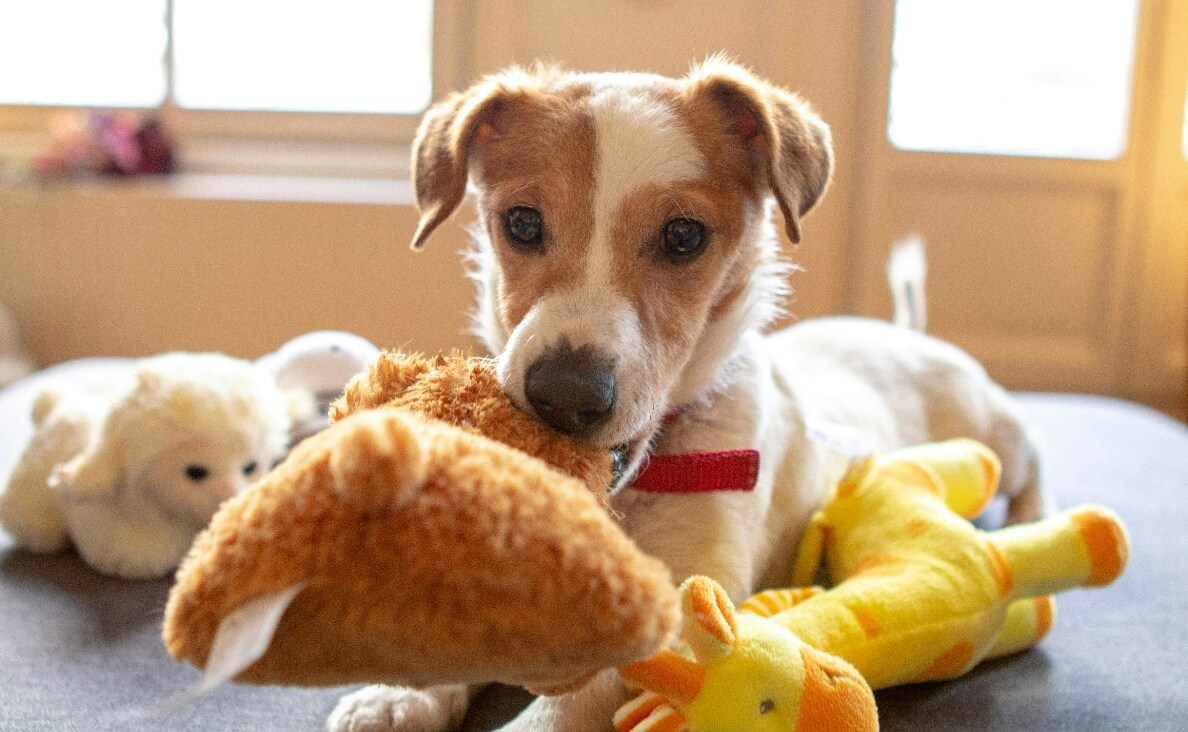
Step-by-Step Guide to Teach Your Dog
Now that you’re prepared, let’s dive into the training process. Follow these steps to help your dog learn to identify toys by name.
Step 1: Introduce the Toy by Name
Begin by selecting one toy to focus on. Show the toy to your dog, let them sniff and interact with it, and repeatedly say the toy’s name. For example, if it’s a ball, say “Ball” while holding or pointing at it.
Encourage your dog to engage with the toy by using an excited tone and offering praise when they touch or pick it up. Repeat this process multiple times to establish the association between the name and the toy.
Step 2: Reinforce the Name with Repetition
Place the toy a short distance away and ask your dog to retrieve it by name. Say, “Get the Ball,” and reward them when they pick up the correct toy. If they choose the wrong item, gently guide them to the correct one without discouragement.
Repetition is key. Practice this step several times to solidify the connection between the toy’s name and the object.
Step 3: Increase the Challenge Gradually
Once your dog consistently identifies one toy, introduce another. Place both toys on the ground and ask your dog to fetch one by name. Say, “Bring the Ball” or “Find the Plushie.” Reward them when they successfully choose the correct toy.
As your dog becomes more confident, add more toys to the mix. You can even create fun challenges, such as hiding toys around the house and asking your dog to locate them by name. With practice, your dog will enjoy showing off their ability to identify toys with ease.
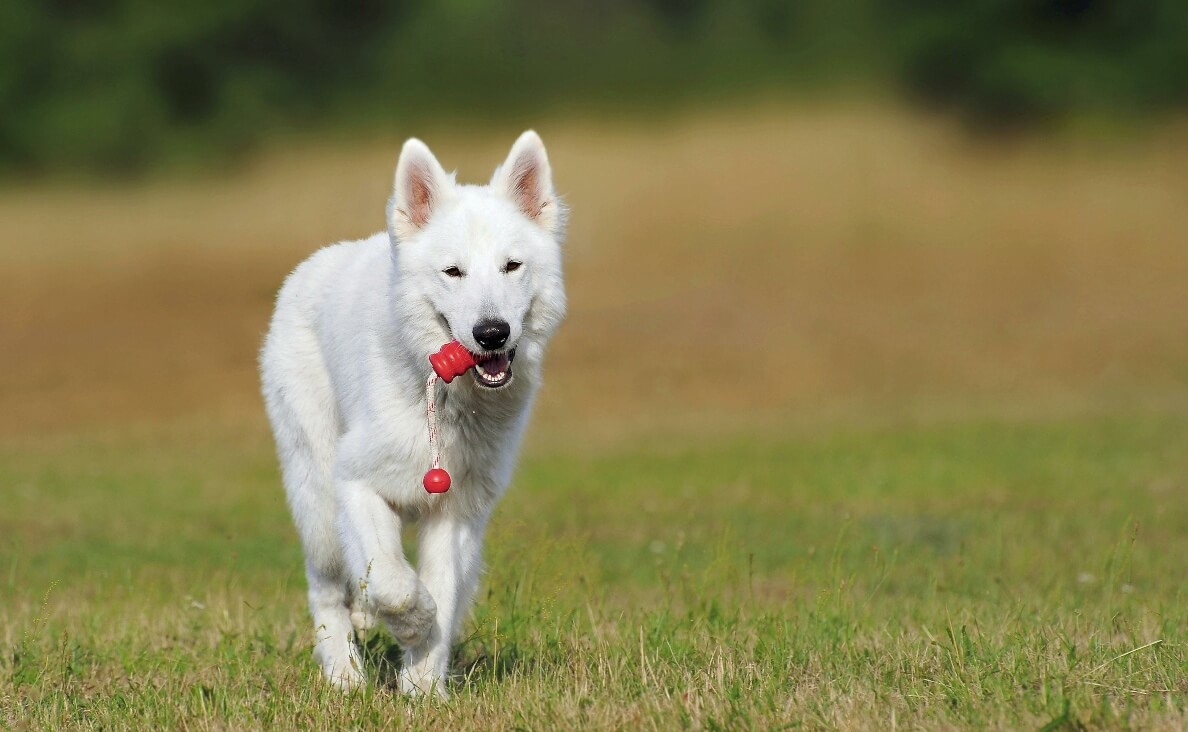
Common Challenges and How to Overcome Them
While teaching your dog to identify toys is a rewarding experience, you may encounter some challenges. Here’s how to address common issues:
1. Distractions
If your dog becomes distracted or uninterested, try shortening training sessions to keep them focused. Use high-value treats or their favorite toy to regain their attention.
2. Trouble Distinguishing Between Toys
If your dog struggles to differentiate between toys, choose objects that are more distinct. Gradually reintroduce similar-looking toys as their skills improve.
3. Frustration
Both you and your dog might feel frustrated at times. Remember to stay patient and keep the training sessions positive. End on a high note by rewarding even small successes.
Patience and persistence are key to teaching your dog to identify toys effectively. Celebrate progress, no matter how small, to keep the experience enjoyable for both of you.
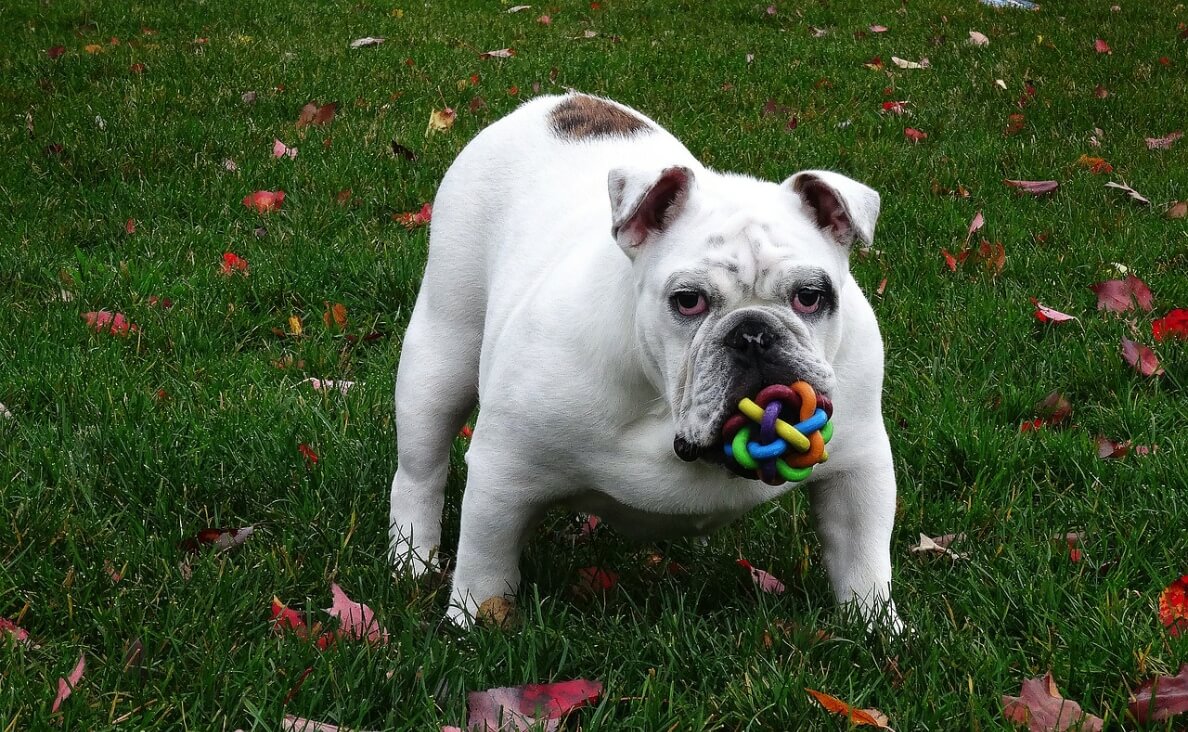
Final Thoughts
Teaching your dog to identify toys by name is a fun and enriching activity that benefits both you and your dog. It sharpens their cognitive skills, enhances playtime, and strengthens your bond. By following the steps outlined in this post, you can help your dog master this impressive trick while enjoying quality time together.
Now it’s your turn! What unique tricks or games have you taught your dog? Share your experiences and favorite tips in the comments below!
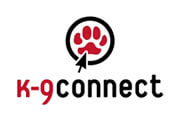
 How to Teach Your Dog Not to Steal
How to Teach Your Dog Not to Steal [FREE DOWNLOAD] Do All of Those Daycare Dogs Get Along?
[FREE DOWNLOAD] Do All of Those Daycare Dogs Get Along? How Intelligent is Your Dog?
How Intelligent is Your Dog? How to Teach Your Dog to Speak with Dog Talking Buttons
How to Teach Your Dog to Speak with Dog Talking Buttons How to Get Your Dog’s Attention Using the “Watch Me” Command
How to Get Your Dog’s Attention Using the “Watch Me” Command






Leave a Reply